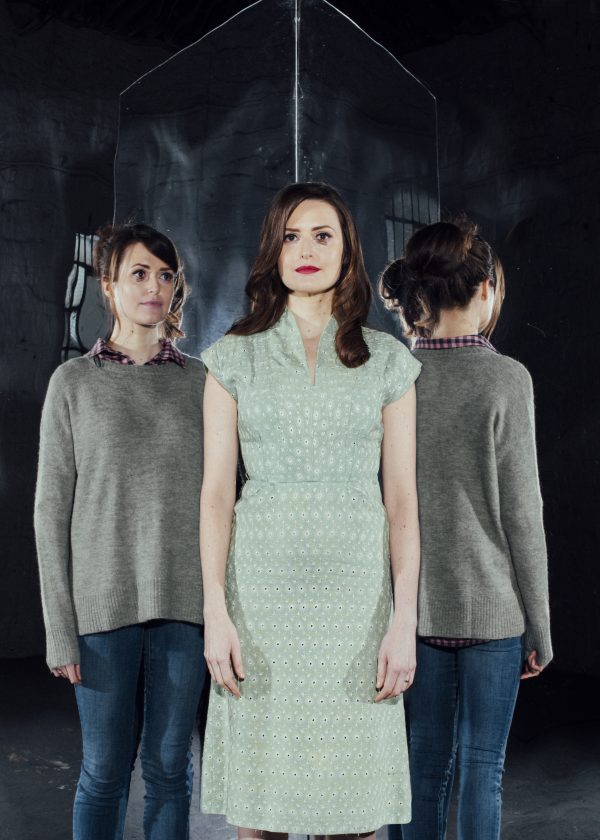
Clare Dunne as Alison Porter – Photo by Luca Truffarelli.
John Osborne’s most renowned 1956 play, which earned that generation the moniker, ‘angry young men,’ established him as an enfant terrible of English theatre and set his playwriting career off to an explosive start, is currently being staged at The Gate as one of their Outsider series of plays.
Running from Feb 1st until March 24th. NewsFour attended a preview performance and we highly recommend booking it for an absorbing and thought-provoking evening.
An edgy stage set with a brave deconstructed twist in the play’s direction by award-winning theatre director Annabelle Comyn makes us hear Osborne’s blistering words anew and gives a fresh look at the themes of disenfranchisement, class, misogyny, the uncertainty of purpose and search for identity.
The young cast handles the complex, tense but powerful emotions with dexterity, intensity and awareness. This realist play of the Fifties focuses on the life and marital struggles of the play’s main character Jimmy Porter, an intelligent, educated but rebellious young man and his equally competent yet emotionless upper-middle class wife, Alison. The story of a young couple whose marriage is imploding as they both struggle in claustrophobic quarters living on very little while, at the same time, relying on the triangular dynamic of their friend and lodging companion Cliff. One was reminded of the toll the housing crisis would take on a couple or any immigrants looking to settle here.
Later Helena, Alison’s friend who comes for an overnight stay, becomes entangled in the situation and relationships. The tableau of characters complete, they adroitly represent empire, family and class structures as well as the attractions and antipathies of the opposite sexes, as much as the existential struggle to survive against the odds of an oppressive system.
Jimmy, the black hole sun around which the others revolve, burns all in his path with his intelligent but bitter and despairing personality.
The play tackles themes of sex, class, religion, politics, the media, and the sense of a country stifled by an official establishment culture. Still relevant today and demanding of our attention.
It crackles with noise and sound effects and is brought up to date in a daring, ‘showing us the strings’ move, that is thought-provoking and heightens the emotion at key junctures.
While this direction shows us the alterations made to the author’s intention, it also emphasizes the theme of misogyny perhaps a little too much and at the expense of the wider and intended motives of the author. It certainly will make for much debate and discussion on the way home, after which you can watch the 1959 film with Richard Burton and Mary Ure for comparison if you don’t know it already.
To read the full preview of the play, pick up the latest NewsFour Feb/March issue.
By: Beibhinn Byrne



